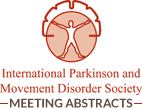
“Objective: Examine the effectiveness of THC marijuana versus non-THC marijuana on handwriting in Essential Tremor.
Background: Essential tremor (ET) is a chronic movement disorder which can be quite debilitating. ET is often progressive, beginning as a mild visible tremor with little or no impact on activities of daily living (ADLs) but tends to increase in severity over the course of years, often to the extent that people with ET may have extreme difficulty with task such as writing, drinking, eating, shaving, or putting on make-up. Unfortunately, a certain portion of people with ET are either intolerant or unresponsive to the currently recommended treatments. Patients occasionally report improvement in ET after marijuana use. While reports exist of THC effect on tremor in patients with Multiple Sclerosis (MS) and Parkinson’s disease (PD), the same is not true for ET.
Methods: Case Report.
Results: Patient JB, a retired psychologist, had long-standing severe familial tremor significantly interfering with ADLs. Standard treatments were tried. Primidone was partially effective, but resulted in erectile dysfunction and anorgasmia. Propranolol was mildly effective, but was switched to metoprolol by his cardiologist. Gabapentin was ineffective and caused GI distress. Topiramate was ineffective. Diazepam and alcohol were effective but used only occasionally due to sedating effects. While on a family vacation in a state with legalized marijuana, JB recorded his handwriting at baseline, after using an oral non-THC marijuana derivative, after using standard marijuana (oral), and after using alcohol. Handwriting was moderately improved after taking the THC preparation, as well as after taking alcohol; the improvement was roughly equivalent with these two treatments. It did not improve with the non-THC preparation.
Conclusions: This case report suggests 1) handwriting in ET may be improved with the use of THC, 2) handwriting in ET may not be improved with non-THC derivatives of marijuana, and 3) the effect of THC in this case was similar to that of alcohol. While there have been several small studies and case reports addressing the efficacy of marijuana in controlling tremor in PD and MS, no such studies have been conducted regarding ET and the use of marijuana and its derivatives for control of ET is currently considered category U due to insufficient evidence. Further investigation of the potential efficacy of marijuana for ET is clearly warranted.” http://www.mdsabstracts.org/abstract/effect-of-marijuana-on-essential-tremor-a-case-report/
Effect of marijuana on Essential Tremor: A case report










